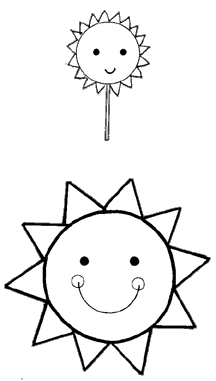Stick puppets
 Stick puppets have a long and honorable history. In the mid-East, stick puppets
are elaborately cut and usually have moving joints and several rods to manipulate them.
Stick puppets have a long and honorable history. In the mid-East, stick puppets
are elaborately cut and usually have moving joints and several rods to manipulate them. In ancient India, China, and Turkey stick puppets were used as shadow puppets. These beautifully decorated, leather cutouts, such as the Tholumatte shadow puppets of southern India, were made and used only by certain families under rigid religious and societal restrictions.
These four to five feet tall leather puppets are only made from hides of animals that died of natural causes. They are beautifully colored and supported by vertical rods. The legs hang loose while the hands are attached to rods. The tales presented by them dealt with gods and demons. The movement, size, style, manner of operation, and content of the plays gave each type of puppet its unique qualities. Men enjoyed the beauty, color and design of the characters because they watched the plays from the same side of the screen as the puppeteer. Women and children were only allowed to view the play from the back of the screen so they saw only the shadows.
In western puppetry, stick puppets are usually not used as shadow puppets. Stick puppets are good to use any time you want to have a puppet that grows, flies or moves quickly from one place to another.
Stick puppets may also be extremely simple and are good to use with very young children who may not have the manual dexterity to manipulate a hand puppet.
Use a stick puppet together with another puppet when you need to have a bird or insect that flies close to the main puppet or when you need an ant or spider to crawl across the stage. You may want to paint the stick the same color as your background so that the stick will be virtually invisible to your audience.